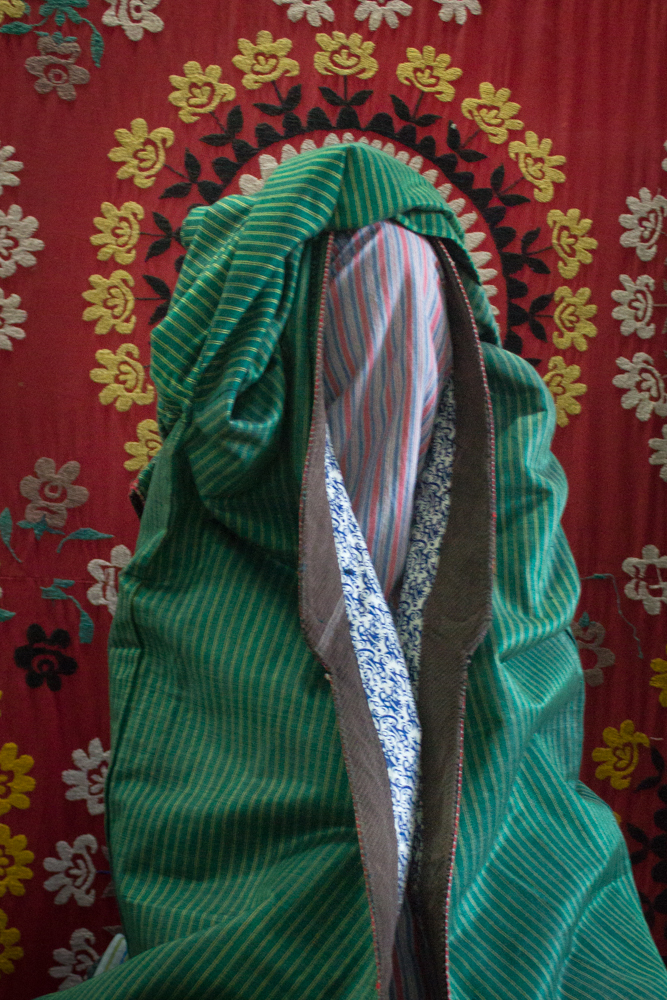Fine Art - NOMINEE: Alia Ali
Alia Ali
CAST NO EVIL
Support this photographer - share this work on Facebook.
Throughout life we are presented with endless examples in which individuals and groups have been excluded from communities based on appearances, beliefs and actions. When this happens, there must always be two, those who impose standards, the decision makers, the 'included,' and those they exclude. Communication can be used to both connect and divide, evolve and regress, educate and destroy. Inclusion is, therefore, engaging someone in a dialogue, but not necessarily a verbal one.
In her photographic series, Cast No Evil, Alia Ali invites the viewer to analyze their subjective perception in regards to inclusion and exclusion, and the threshold in which the transition between the two, occurs. What are the perimeters that define each?
The artist highlights the notion of the immediate duality that occurs in any given situation; to have one, you must have the other for either to exist. In this case, understanding inclusion requires us to be critical of what it means to be excluded. In order to be included, must one come from a state of exclusion or vice versa? The theme of duality extends to questioning the moment in which the mysterious becomes apparent, restraint becomes freedom, the underneath becomes the above, and illusion becomes reality.
`
The characters in the portraits, called —cludes, are wrapped in layers of fabric that shield them from interrelating with anything beyond the material. What are these fabricated barriers in society that inhibit the incorporation of others? Or are the obstacles just that: ideas, intuitions, fear, discriminations and ‘understandings’? Does inclusion mean acceptance? If so, does this definition lend itself to exclusion meaning rejection? Or do they both mean different points on the spectrum of tolerance?
What side of the fabric are we on and can we be on both sides at once? When we exclude, does it come from the fear of being excluded ourselves? Isn’t exclusion a form of security, as well? If so, what is it that we fear from discovering that lies beneath the cloth and behind the curtain? By remaining indifferent, and incommunicative, do we become like one of them, dehumanized? Dummies? Or are we the ones enclosed and what we see is an illusive barrier that we have bestowed on them?
Does the material set a power dynamic? It certainly creates a boundary, but who holds the power; them, for their anonymity, or us, for their confinement?
Who are the ‘includes’ and who are the ‘excludes’?
About author:
Alia Ali (Austria, 1985) is a Yemeni-Bosnian-American multi-media artist and visual storyteller. Having traveled to fifty-three countries, lived in seven and grown up among five languages, her most comfortable mode of communication is through image and multi-sensory mediums. Her extensive travels have led her to process the world through interactive experiences. As a child of two linguists, Alia believes that the interpretation of verbal and written language has dis-served particular communities and presents more of a threat than a means of understanding.
Alia’s aesthetic interests stem from people, place, and the processes which unite and divide us, all at once. Her work reflects on the politics and poetics of contested notions surrounding the topics of identity, physical borders, universality, mental/physical spaces of confinement, and the inherent dualism that exists in everything. Her work blurs the lines between what we claim to be objective and subjective, illusion and reality, truth and interpretation.
Alia is a graduate of the United World College of the Atlantic (UWCAC) and holds a BA in Studio Art and Middle Eastern Studies from Wellesley College. Her studio is based between New Orleans and Marrakech. Her recent work has been featured at the Ogden Museum of Southern Art during PhotoNOLA, the Marrakech Biennale 6th Edition KE’CH Collective, and PhotoLondon as part of the LensCulture Exposure Awards 2015.

